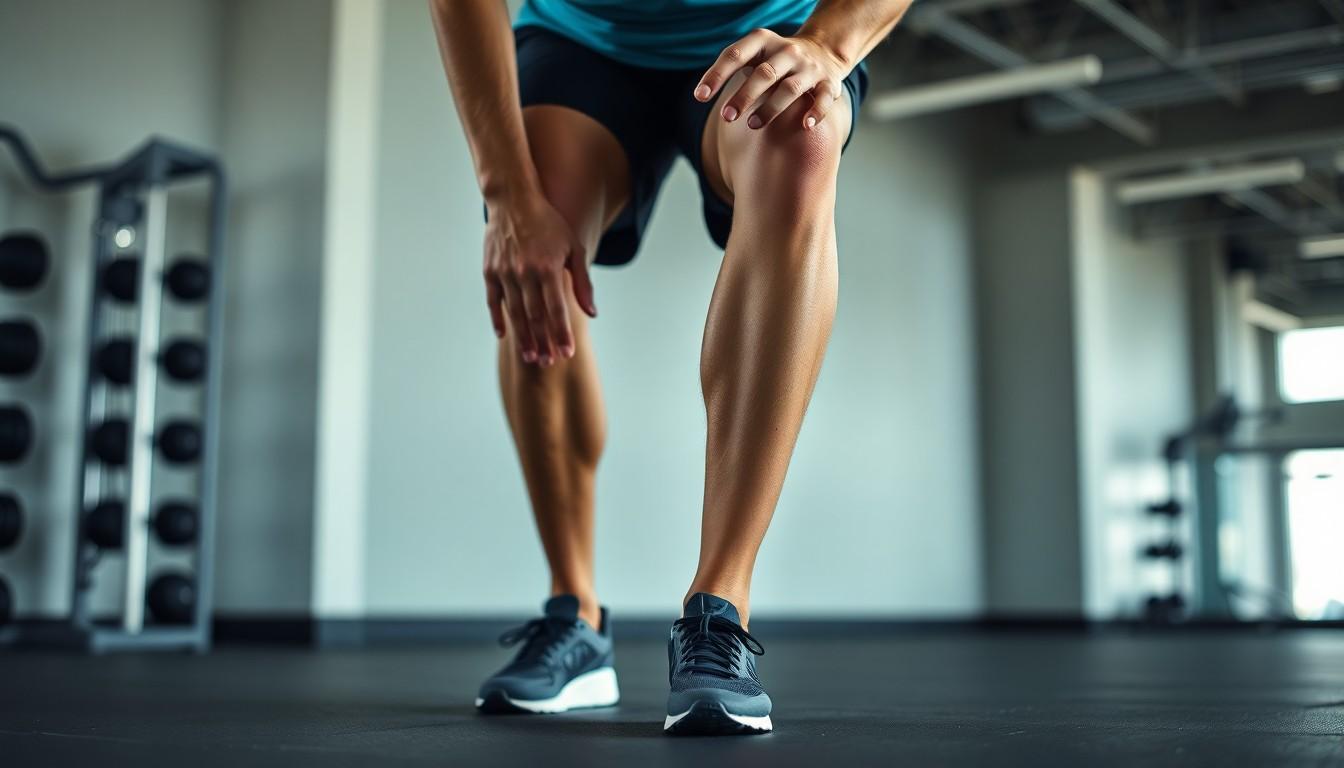Shin splints can feel like a relentless nagging companion during workouts, making even the most dedicated fitness enthusiast reconsider their love for running. If those pesky pains have turned your jog into a shuffle, it’s time to take action. With the right exercises, anyone can kick shin splints to the curb and reclaim their stride.
Understanding Shin Splints
Shin splints affect many runners and fitness enthusiasts. Knowing the details can help in managing this condition effectively.
What Are Shin Splints?
Shin splints refer to pain along the shin bone, or tibia, and often occur during physical activities. This discomfort can manifest in a variety of intensities, impacting mobility. Pain tends to worsen while engaging in high-impact exercises or long-distance running. Both athletes and casual exercisers may experience this condition at some point. Recognition of symptoms is crucial for implementing effective treatment strategies.
Causes of Shin Splints
Multiple factors contribute to shin splints. Overuse during intense workout sessions frequently leads to soreness in the lower leg. Poor footwear lacking adequate support can increase strain on the muscles and tendons. Running on hard surfaces, such as concrete, also elevates the risk of developing shin splints. Additionally, sudden increases in workout intensity or frequency can surpass the body’s adaptation capacity. Understanding these causes aids in prevention and recovery efforts.
Importance of Exercise for Shin Splints

Exercise plays a critical role in managing shin splints effectively. Engaging in targeted workouts not only promotes recovery but also strengthens the muscles around the shin.
Benefits of Exercise
Exercise enhances flexibility and strength in the lower leg muscles. Improved flexibility reduces tension on the tibia and surrounding tissues. Strengthening exercises support the muscles that stabilize the leg during movement. Almost every exercise can increase blood flow, which accelerates healing. Furthermore, regular activity helps maintain overall fitness levels while preventing weight gain. Engaged individuals might notice a decrease in pain over time, allowing for a return to higher intensity workouts.
Risks of Inactivity
Inactivity can exacerbate symptoms of shin splints substantially. Muscles weaken and lose flexibility when not exercised, leading to increased strain during activities. Without regular movement, individuals experience reduced circulation, slowing down the healing process. Consequences of being sedentary often include stiffness in the joints and muscles, making it challenging to resume physical activity. Additionally, skipping exercises may lead to compensatory movements, increasing the risk of injury elsewhere in the body. Embracing a consistent exercise routine mitigates these risks effectively.
Best Exercises for Shin Splints
Incorporating specific exercises can significantly aid in managing shin splints. The following categories of exercises focus on stretching, strengthening, and low-impact aerobic activities to promote recovery and prevent recurrence.
Stretching Exercises
Stretching exercises enhance flexibility in the lower legs. Calf stretches help alleviate tightness, which contributes to shin splints. To perform a calf stretch, the individual should stand facing a wall, placing one foot behind the other. They should lean forward, keeping the back knee straight and the heel on the ground. Holding for 15-30 seconds can improve muscle length. Another effective stretch involves sitting on the floor and reaching for the toes, promoting hamstring flexibility. These stretches should be done daily for optimal results.
Strengthening Exercises
Strengthening exercises build muscle support around the shins. Toe raises, which strengthen the front and back of the lower leg, involve lifting the toes while keeping the heels on the ground. This movement effectively targets the tibialis anterior. Another beneficial exercise is using a resistance band for ankle dorsiflexion, where the individual pulls their toes toward the shin against the resistance. Balancing on one leg can also enhance proprioception and strengthen stabilizing muscles. Incorporating these exercises into a routine fosters stronger lower legs and minimizes shin splint occurrences.
Low-Impact Aerobic Exercises
Low-impact aerobic exercises allow for cardiovascular fitness without stressing the shins. Swimming provides an excellent full-body workout while keeping the lower limbs buoyant. Cycling, either on a stationary bike or outdoors, promotes leg strength and endurance with reduced impact. Even brisk walking can serve as an effective option, gradually increasing duration and intensity. Engaging in these activities enables individuals to maintain fitness levels while alleviating the pressure on shins, making them crucial for a balanced recovery strategy.
Creating an Exercise Routine
Establishing a structured exercise routine is vital for managing shin splints effectively. Consistency plays a critical role in recovery and prevention.
Frequency and Duration
Aim for short, frequent sessions to avoid overloading the shins. Exercises should occur at least three to four times weekly. Each session can last 20 to 30 minutes. Begin with stretching, followed by strengthening exercises, and conclude with low-impact aerobic activities. Gradually increase duration as the body adapts. Pay attention to any signs of discomfort; listening to the body is crucial. Balanced routines help maintain fitness levels without aggravating shin splints.
Monitoring Progress
Regularly track improvements to ensure the routine remains effective. Keeping a journal can help document each session’s exercises, duration, and comfort levels. Adjustments may become necessary based on symptoms and advancements in strength. If pain decreases, gradually increase the intensity of workouts. It’s important to consult a healthcare professional if discomfort persists. Celebrating small victories, like increased range of motion or endurance, can motivate continued dedication. Monitoring progress fosters a sense of achievement and aids in maintaining a focused recovery pathway.
Additional Tips for Managing Shin Splints
Managing shin splints requires a comprehensive approach. Proper footwear and recovery techniques play crucial roles in alleviating symptoms.
Proper Footwear
Choosing suitable footwear is essential for preventing and managing shin splints. Cushioned shoes provide necessary shock absorption while running on hard surfaces. Individuals should select shoes designed for their specific foot type, ensuring proper arch support. A regular shoe replacement every 300 to 500 miles sustains optimal cushioning and support. Custom orthotics might aid those with existing foot conditions, further reducing strain on the shins. Evaluating footwear options before engaging in any physical activity can minimize the risk of shin splints and enhance overall performance.
Recovery Techniques
Incorporating effective recovery techniques accelerates healing for shin splint sufferers. Ice therapy serves as a primary method, applying ice packs for 15 to 20 minutes after activity reduces inflammation. Additionally, foam rolling targets tight muscles in the lower legs and aids recovery. Compression sleeves provide support during rest and help maintain circulation. Elevating the legs can also aid in reducing swelling after workouts. Prioritizing rest days allows the body to recover adequately and should not be overlooked in any exercise routine. These techniques collectively support long-term management of shin splints and promote a quicker return to activity.
Conclusion
Managing shin splints requires a proactive approach that combines targeted exercises with proper recovery strategies. By incorporating stretching and strengthening workouts into a regular routine, individuals can enhance their lower leg flexibility and stability. Low-impact aerobic activities help maintain cardiovascular health without aggravating the condition.
Choosing appropriate footwear and utilizing recovery techniques further supports healing and prevents future issues. Staying consistent and monitoring progress can lead to significant improvements. With dedication and the right strategies, individuals can overcome shin splints and enjoy a pain-free running experience once again.

